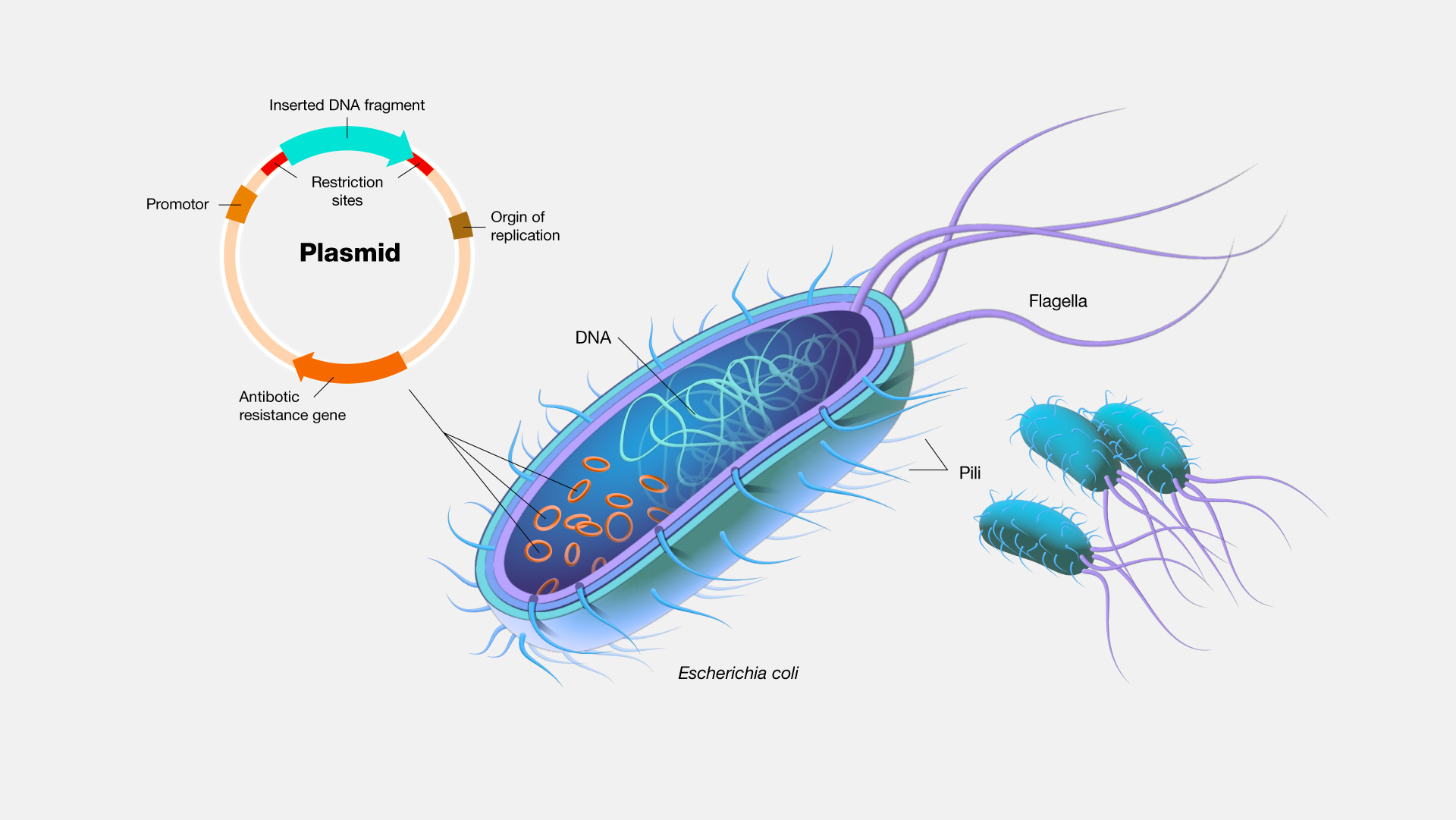Exploring Plasmids: An Overview of Molecular Vectors in Genetic Engineering
Plasmids are small, circular DNA molecules commonly found in bacteria and other microorganisms. They play a significant role in molecular biology and genetic engineering due to their ability to replicate independently from the host organism's chromosomal DNA. In this blog post, we'll explore the basics of plasmids and their importance in various scientific applications.
What Are Plasmids?
Plasmids are genetic elements that exist outside the chromosomal DNA in prokaryotic cells. They are typically double-stranded DNA molecules ranging in size from a few to several hundred kilobases. Unlike chromosomal DNA, which contains essential genetic information for the organism's survival, plasmids often carry non-essential genes that confer various advantages to the host organism under specific conditions.
Functions of Plasmids
Plasmids serve several functions, including:
- Antibiotic Resistance: Many plasmids carry genes that confer resistance to antibiotics. Bacteria can transfer these plasmids to other bacteria through horizontal gene transfer, contributing to the spread of antibiotic resistance.
- Virulence Factors: Some pathogenic bacteria harbor plasmids containing genes encoding virulence factors, which are molecules that enable the bacteria to cause disease in their host organisms.
- Metabolic Functions: Plasmids can carry genes involved in metabolic pathways, such as the ability to metabolize certain nutrients or produce specific enzymes.
- Gene Expression Regulation: Certain plasmids contain regulatory elements that control the expression of genes, allowing the host organism to respond to changes in its environment.
Applications of Plasmids in Research
Plasmids are invaluable tools in molecular biology research and genetic engineering. Some common applications include:
- Gene Cloning: Plasmids are widely used as vectors for cloning DNA fragments of interest. Researchers can insert DNA sequences into plasmids using restriction enzymes and ligases, creating recombinant DNA molecules that can be introduced into host cells for replication.
- Gene Expression Studies: Plasmids containing reporter genes, such as green fluorescent protein (GFP), are used to study gene expression patterns in cells. By fusing the gene of interest with a reporter gene and introducing the plasmid into cells, researchers can visualize the expression of the gene under different conditions.
- Gene Editing: Plasmids are used as delivery vehicles for gene editing tools, such as CRISPR-Cas9. By designing plasmids that encode the CRISPR components and the desired guide RNA sequences, researchers can introduce specific mutations or modifications into the genome of target cells.
Conclusion
Plasmids are versatile genetic elements that play crucial roles in both bacterial physiology and molecular biology research. Their ability to carry and transfer genes makes them valuable tools for studying gene function, manipulating genomes, and developing biotechnological applications. Understanding the basics of plasmids is essential for anyone working in the fields of microbiology, genetics, or biotechnology.
Recent Posts
-
A Technical Primer on CRISPR-Cas9 Gene Editing
CRISPR-Cas9 technology has revolutionized the field of molecular biology by providing a simple yet p …5th Apr 2024 -
Exploring Plasmids: An Overview of Molecular Vectors in Genetic Engineering
Plasmids are small, circular DNA molecules commonly found in bacteria and other microorganisms. T …5th Apr 2024 -
Strongylocentrotus purpuratus
Strongylocentrotus purpuratus is the scientific name for the purple sea urchin, a species of sea urc …1st Mar 2024

